Recent Posts
How to Repair a Burst Pipe
11/14/2024 (Permalink)
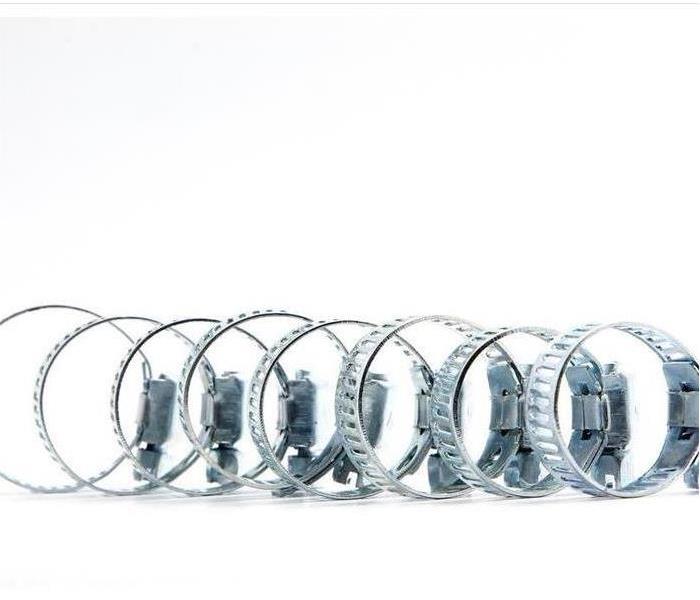 Fix a broken pipe by using metal clamps
Fix a broken pipe by using metal clamps
Bursting pipes can cause a lot of damage in a short amount of time, making them a scary issue for many homeowners. If your home in New Sweden, TX, is experiencing a pipe burst, chances are you will need to call a plumber to help resolve the issue. In the meantime, you can secure the leak using the following technique.
Fix Broken Pipe Using a Clamp and Sleeve
A clamp and sleeve kit can provide a temporary patch to stop the leak while you wait for remediation experts to arrive. Patch your bursting pipes using the following technique:
- Shut off the main water line. Use a metallic file or steel wool to smoothen any rough areas around the damaged section of pipe.
- Position the rubber sleeve so that it is centered over the burst. The clamp's seam should be facing the opposite direction of the break.
- Position the metal clamps around the rubber sleeve. Use a screwdriver to tighten the clamps.
- Reopen the water supply to the pipe. Watch carefully for any leaks.
The above technique should temporarily solve the issue while you wait for the plumber to arrive. If it doesn't fix the leak, simply repeat the process and reposition the clamp until it solves the issue.
Dry the Water
As soon as you stop the leak, you need to start drying the water. Standing water can quickly cause a lot of secondary damage, such as mold growth, so it's important that you act quickly. If the leak was small, you can resolve the issue by mopping up the water with a towel. Larger leaks that create a lot of water damage likely require professional assistance.
It's important that you take immediate action to fix bursting pipes as soon as you discover it. The subsequent water damage can wreak havoc on your home and cause several subsequent issues. Contact water remediation experts for help assisting with damage cleanup.
How Do Restoration Professionals Handle Commercial Fire Damage Cleanup?
10/16/2024 (Permalink)
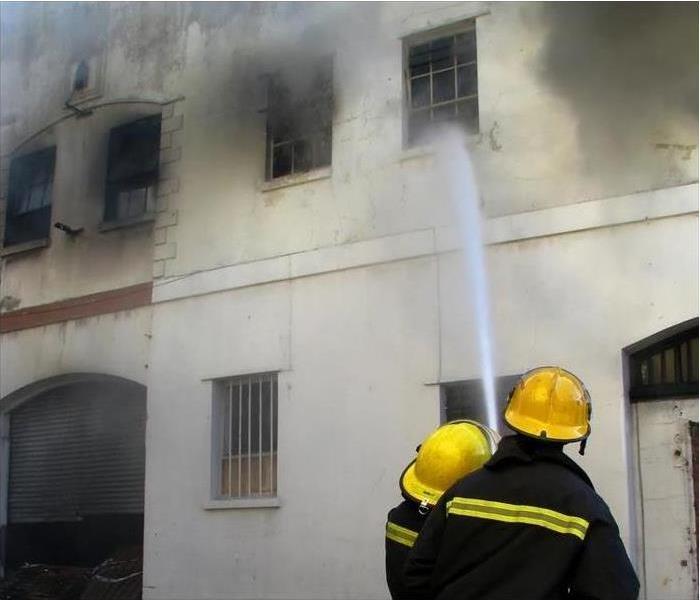 Commercial fire damage in Manda, XT
Commercial fire damage in Manda, XT
As soon as a fire in a commercial building goes out, the property owner should contact restoration experts in Manda, TX. Restoration professionals clean up every sign of fire and smoke damage as quickly as possible. Every day that a fire limits operations can prove costly for businesses. A restoration company should arrive on site within hours and take the following measures to assess, mitigate and clean up fire damage.
Inspect the Fire Damage
The first goal of restoration professionals involves determining the effects of fire on building materials and contents. An expert inspection of damage informs all of the following measures:
- Documenting damage for insurance purposes
- Estimating total costs of restoration
- Mitigating primary and secondary damage
- Scheduling cleanup and restoration
An inspection will determine whether a loss is partial or total. Ruined building materials must be torn out and disposed of and contents should be taken off site for cleaning or reported as losses. A total loss may require rebuilding a structure and replacing all contents.
Mitigation and Cleanup Measures
Mitigating fire damage may start by covering up breaches in the roof, walls or windows of a structure to limit access and exposure of materials that can be cleaned and restored. Cleanup may start with the extraction of standing water, removing debris and treating soot damage. Even after all surfaces have been cleaned, it may still be necessary to remediate smoke damage.
Restore Affected Areas
The affected areas of a structure should be cleaned and rebuilt during restoration. Any materials remaining intact must be sanitized and may require repainting, first with a primer resistant to soot staining and then a fresh coat of paint. Specialized soot and smoke cleaning methods may be used to clean contents. Thermal fogging or ozone or hydroxyl treatments may be necessary to eliminate stubborn smoke damage at a commercial building in Manda, TX.
What to Do If a Toilet Overflows in Your Home
7/26/2024 (Permalink)
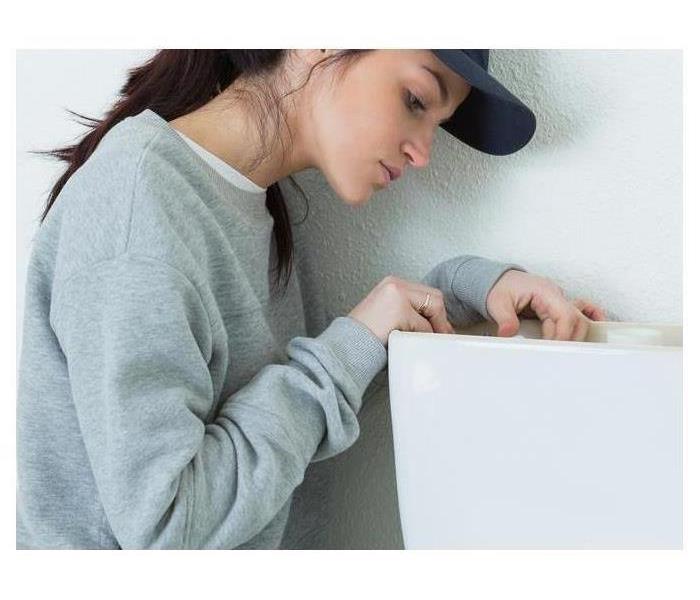 Open the tank and raise the float so that the inflow valve shuts off
Open the tank and raise the float so that the inflow valve shuts off
The world could be said to have entered the modern era around 1900 since this was when average homeowners started seeing flushing toilets become widespread for individual residences. Solutions to handling sewage before indoor toilets were inconvenient at best and frequently a public health disaster.
Unfortunately, when commodes don’t work right, it can feel like a throwback to the 19th century, potentially leaving you with widespread sewer damage in your home – and an unholy mess to face. Knowing how to handle it will make your life easier.
What Are the Types of Damage?
The sewer damage to your home will depend on the category of water damage:
- Category 1 is clean water with no waste.
- Category 2 is grey water with urine but no feces.
- Category 3 is black water with fecal material.
A flooded toilet with clean water will at least present no danger of contamination, although if it soaks into carpet, wood, or drywall, you may need professional help. Category two or three will almost always require an expert to disinfect the impacted areas and inspect for hidden water damage.
What Should You Do if It Happens?
First off, stop the overflow! Open the tank and raise the float so that the inflow valve shuts off. If necessary, turn off the water to the toilet. Remove standing water as fast as possible; if it’s a small amount of clean water and you remove it immediately you may not need to do anything else. If there’s sewer damage, excessive amounts or contaminated water, you’ll almost certainly need to consult with a local restoration company experienced in dealing with serious water damage.
Who’s Responsible for the Clean-Up?
In most cases, you’re the lucky one who deals with the mess. Unless your sewage company can be shown to have negligently caused a serious plumbing issue, the homeowner is responsible in Pflugerville, TX. In a multi-family unit, your landlord may share responsibility or be expected to handle the problem if the sewer line is shown to have serious issues. At the least, the immediate mess is always your problem.
Key Distinctions Between Storm Damage and Flood Damage
7/19/2024 (Permalink)
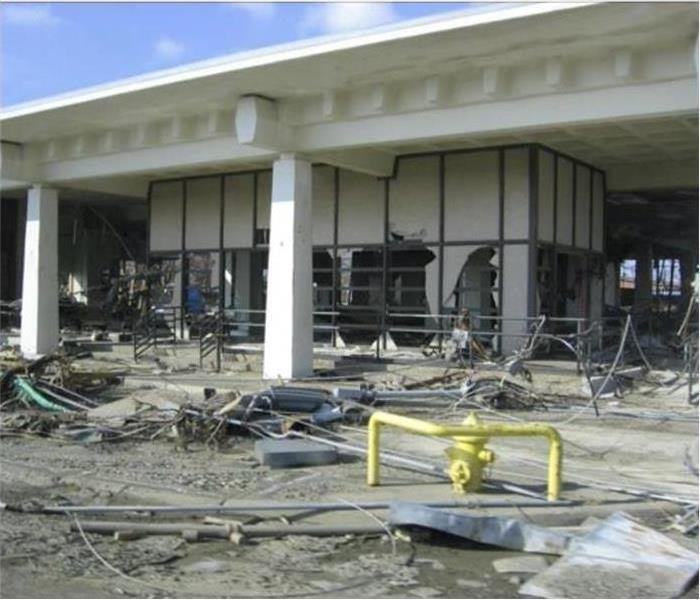 Storm damage in Pflugerville, TX
Storm damage in Pflugerville, TX
Storm Damage vs Flood Damage
At first glance, it would seem that flood damage and damage from a storm would be pretty similar. In reality, though, the two have critical differences. A flood usually occurs from the ground up, often the result of rising waters from streams and rivers and typically entering a building in Pflugerville, TX, by way of a the foundation. On the other hand, water from storms more often than not comes down from above through the roof system. Storm damage also includes harm to the building caused by powerful winds, large hail or heavy snows. Either type of damage can be devastating to a company, but the restoration process for each includes important differences.
Insurance
Flood damage is not typically covered by a company's general insurance policy, while damage from a storm is usually covered. Therefore, a company that is located in an area at risk for flooding should carry flood insurance. The most common and affordable flood insurance is available through the National Flood Insurance Program and has the following features:
- Covers damages caused by a flood
- Is administered by FEMA
- Is voluntary in most circumstances
- Is purchased through licensed insurance agents
- Typically has a 30-day waiting period
Damage from a storm is typically covered under a company's general policy. It usually covers damage caused by the storm and expenses for restoration.
Cleanup
A company faced with any type of water damage should consult with a reputable storm mitigation franchise for assistance with restoration. In the case of flood damage, though, the cleanup is complicated with the presence of contaminated water. This dirty water coming into the building could contain chemicals, pathogens, microbes and other potentially dangerous substances. This requires cleanup and restoration by an experienced team of trained technicians that wear PPE and take other safety precautions. The water from a storm coming in through the roof is seldom considered contaminated and can be addressed through a standard restoration process.
Steps to Prevent Mold Problems at Your Facility
7/9/2024 (Permalink)
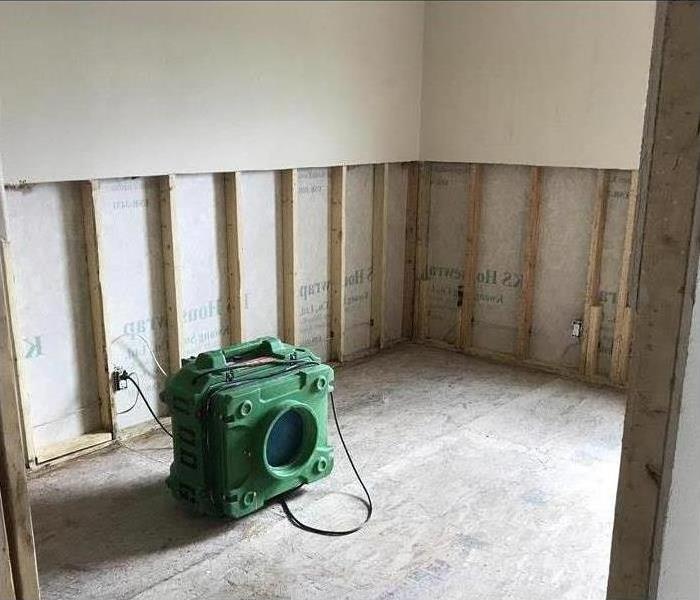 Mold removal services in Austin, TX
Mold removal services in Austin, TX
If you own or manage a business in Austin, TX, you probably take various precautions to ensure a clean and mold-free environment. Mold exists everywhere, but routine carpet cleaning and air quality inspections can prevent the spread of mold spores in your facility.
The Importance of Clean Carpets
Carpets are susceptible to mold because they tend to absorb moisture from:
- Wet shoes
- Spills
- Leaks
- Humidity
They also accumulate dirt and debris, despite the use of entrance doormats for wiping shoes. Once mold spores form, they actively feed on organic substances comprising or trapped within the carpet's fibers. As the spores multiply, they can spread into the air, necessitating a professional mold remediation company's services. Carpet cleaning can discourage mold formation by removing dirt before it accumulates, and HEPA vacuums can extract spores before they multiply.
Mold in The Air
Most office buildings' air contains some mold, that does not necessarily lead to mold problems; however, significant amounts of mold can develop if condensation builds around plumbing pipes or within an HVAC system. Routine inspections and maintenance, including leak repairs, air filter changes, air duct cleaning and humidity control, can contain the amount of mold in the air. If you experience persistent problems relating to these systems or suspect mold, you may want to schedule a professional air quality inspection.
Invisible Signs of Mold
Although rigorous carpet cleaning and systems maintenance can go a long way toward preventing mold spores from spreading through the air, once you determine that mold exists, it is critical to take action.
Mold can be invisible, but a musty odor and employees with persistent allergy symptoms could indicate mold problems requiring aggressive measures that require your business's temporary closure.
Although many unforeseen circumstances can cause excess moisture that can lead to mold formation, routine cleaning, along with other maintenance efforts, can prevent mold problems or your facility's temporary closure in Austin, TX.
How to Avoid Home Fires Caused by Candles
6/25/2024 (Permalink)
 Candles should always be placed in plain sight and spaced reasonably apart
Candles should always be placed in plain sight and spaced reasonably apart
What sets the mood better than a romantic glow? That said, a wayward candle fire could just as easily ruin a special evening. If such an incident takes hold in your house, you will inevitably need a fire damage cleanup specialist to set things right.
Candle Incident Statistics
You may be shocked to learn some data concerning how often candle fires occur:
- They account for 2% of all reported home blazes.
- Every day, there are 21 unique reports of such accidents.
- 60% of all candle-related incidents occur when unsecured combustible material comes into contact with flames.
In consideration of the above, decreasing the number of mishaps caused by candles remains a worthy objective. Luckily, commonsense measures can curb your odds of requiring smoke cleanup and other restoration procedures.
Candle Fire Prevention
Before setting anything alight, consider a flameless alternative. On top of their inherent safety, electric candles sometimes come with flashy features like remote controls and flicker settings. Should you opt for the real deal, forego the use of matches. Instead, use a long, flexible lighter that gives control over the flame’s size and cools nearly instantaneously.
Always keep wax clean and remove flammable remnants such as dust or hair. Never use a plastic container and toss cracked glass. Using a wick trimmer, bring the string to 1/8th of an inch. Note, too, that when wax gets low it becomes unsafe. Stop burning once your jarred candle reaches a half-inch. Non-jarred candles should be retired after arriving at the two-inch mark.
Candles should always be placed in plain sight and spaced reasonably apart. Only extinguish flames with a snuffer, never water, and use them exclusively in properly ventilated rooms.
Nobody wants their home burned by a candle fire, but observation of best practices can help prevent disaster. Simple due diligence can stop your residence from suffering the fate of so many others.
This Is the Smoke Alarm You Need
6/25/2024 (Permalink)
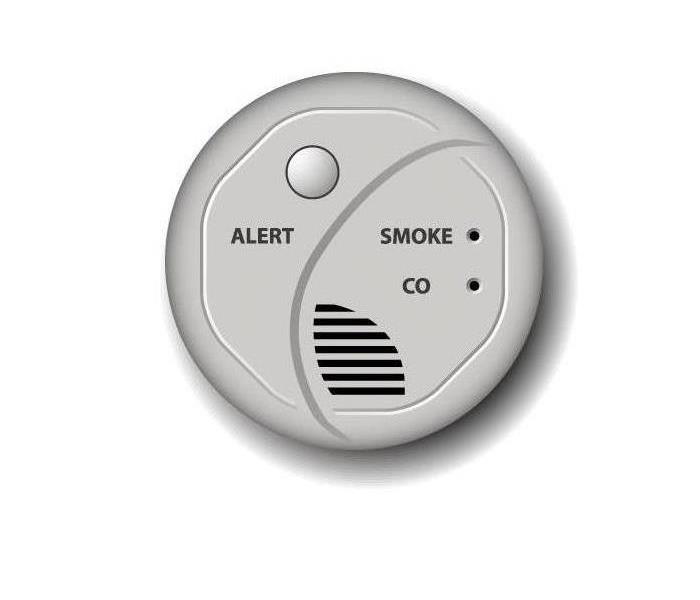 Dual sensor smoke detector.
Dual sensor smoke detector.
How To Choose The Right Smoke Detector
You probably think that simply installing any smoke alarm in your home is enough. However, there are several options to choose from. Read on to find out how to choose the right smoke detector for your particular residence.
1. Consider the Size of Your Home
A bigger home will need more units. When purchasing, consider:
- Number of rooms
- Square feet
- Sleeping location
- Special needs
You need to put a smoke alarm in each room, as well as the hallways leading to bedrooms. Also factor in attics, basements, and both ends of staircases. Essentially, make sure you'll be able to hear the alarm at any time of the day.
2. Choose a Type
If you have a larger residence, you should look into devices that can be wired along with the same network.
- Ionization
- Photoelectric
- Dual-sensor
- Air-sampling
- CO2 combo
There may be regulations in Pflugerville, TX, so make sure to check before installing. Often, these regulations can require hard-wired devices. If this is the case, you have to have them installed by local fire prevention and remediation specialists.
3. Make Sure It Works
This may seem obvious, but you need to test your smoke detectors. Think about fire safety. You may only have 2 minutes to evacuate. Does your alarm do its job in time? Check if batteries need to be replaced. If your system is hard-wired, it may also have backup batteries. Make sure these are in working condition. Keep in mind that placement should also be conducive to monthly testing. If you can't reach the alarm or don't have a ladder, reconsider placement. You should also keep units free of dust and grime that may inhibit usefulness.
Further, look for the circle logo on your units or their packaging. There should be a "UL" denoting that they have been tested and certified by Underwriters Laboratories. This is the most common certification, but there are others. Always do a quick internet search to verify your alarm's standard testing.
If you pick the right smoke alarm and test it monthly, you are doing the best that you can for fire prevention. Practice how to turn off the alarm without dismantling it from the wall or ceiling. Stay safe.
How To Protect Your Home From Lightning
6/25/2024 (Permalink)
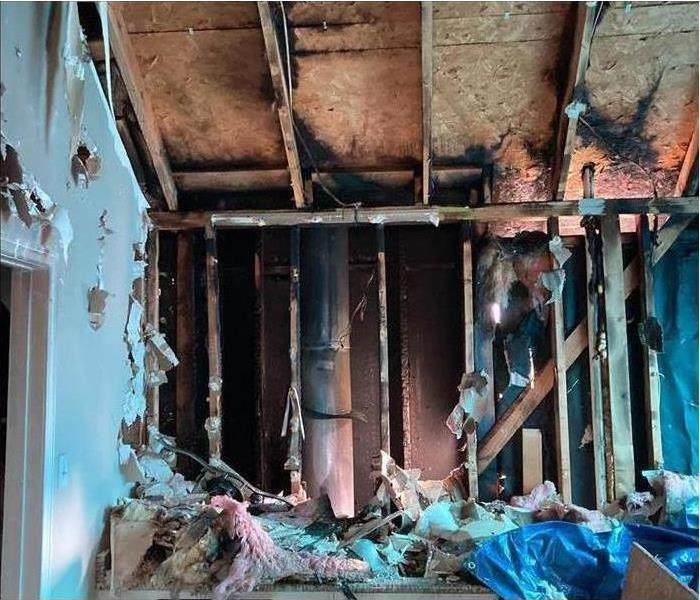 Fire damage to a home in Austin, TX.
Fire damage to a home in Austin, TX.
What happens when lightning strikes a home in Austin, TX? About 6,300 homes are struck each year without a resulting house fire. However, an additional 4,300 strikes each cause a residential lightning fire. Learn how to keep yourself and your home safe during this unpredictable, menacing weather event.
How Do I Protect Myself During a Storm?
When the weather turns bad outside, it is tempting to go about your normal business inside of the house. When you hear thunder, however, there are steps you should take to protect yourself and reduce the risk of lightning fire:
- Stay inside of your home, away from windows and doors. A good rule of thumb is to wait 30 minutes after you hear the last of the thunder to resume normal activities.
- If lightning strikes your home, it could cause a power surge. As a precaution, keep your distance from televisions, computers and other electrical devices. Do not take baths or showers, wash dishes or do laundry. Cellular phones are safe to use.
What Actions Do I Take If My House Is Hit?
If your house is struck, you will hear and feel a powerful boom. If you suspect the bolt has made contact with your home, take the following steps:
- Quickly check the health and safety of all family members and pets.
- Leave your home immediately if there is fire or smoke.
- Call 911 and report it, regardless of whether you see a fire. The fire department can determine if your home is safe.
- Contact your homeowner’s insurance agent, as damage is likely covered under your policy.
- Call a fire restoration specialist to assess your home. Even if a large house fire did not occur, there may be hidden damage in your roof or attic that could lead to further troubles down the road if not repaired promptly.
A lightning fire in Austin, TX, is a rare, but possible occurrence. By taking proper precautions during a storm and following correct procedures after a strike, you can keep your family safe and minimize the damage to your home.
Do Not Let Black Water Ruin Your Day!
4/17/2024 (Permalink)
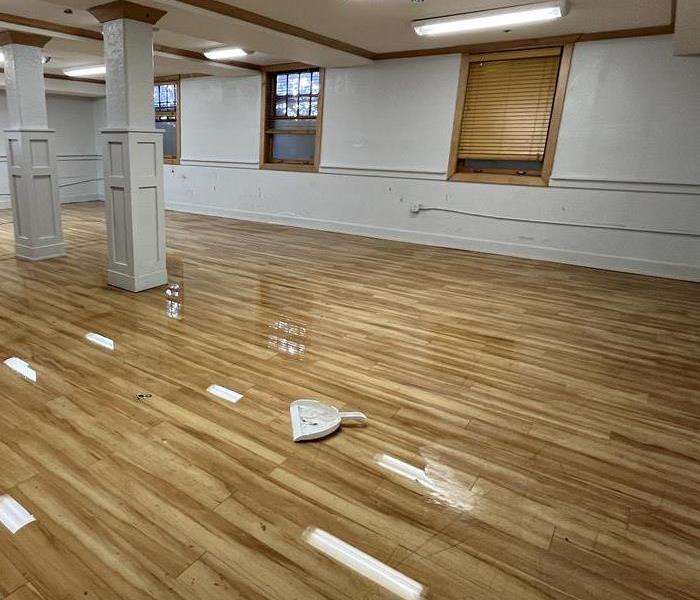 This flooded room was caused by a severe rain storm in Pflugerville, Texas. This picture shows standing water on a wood floor
This flooded room was caused by a severe rain storm in Pflugerville, Texas. This picture shows standing water on a wood floor
When home or business property in Pflugerville, Texas is flooded, it may have negative impacts on you. Flood water can damage equipment, furniture, files and merchandise. When hurricanes and heavy storms occur, flooding becomes an even bigger concern because the water typically causes sewer backups, which leads to bacteria-filled black water. Call SERVPROof Pflugerville when flood water damages your home or business.
Are there Different Types of Contaminated Water?
Experts classify water into three-categories to describe the level of contaminants in different types of water. The first category is “clean water,” which comes from a fresh supply line, such as a sprinkler system or sink faucet. The second category is “gray water,” which comes from sources like washing machine drains. This water is dirty but not highly toxic. “Black water” is the third and most dangerous category. Flood water, sewage and drain backups, and toilet overflows fall into this category because the contaminants in these waters are so toxic.
When your home or business property is affected by sewage water, it contaminates the air, floor and everything it touches. If not properly sanitized, unsafe water can continue to be harmful to people. Whether it is your home, retail property, manufacturing facility or warehouse, it can put people’s health at risk. Safety concerns can cause a business to have to close its doors, which only results in further loss.
What Can Be Done About Harmful Flood Water?
If you find yourself dealing with water damage, act quickly and call SERVPRO of Pflugerville. We are available 24-hours a day and will assess the damage, extract the water safely, remove contaminated articles, and sanitize the area according to IICRC standards for safety.
SERVPRO of Pflugerville should be your first choice for any residential or commercial water damage. Our team of professionals is trained to assess the damage, identify potential threats, and respond quickly to restore your property to preloss condition. SERVPRO of Pflugerville is available 24/7 by calling 512-990-4776
How To Use a Fire Extinguisher
2/13/2024 (Permalink)
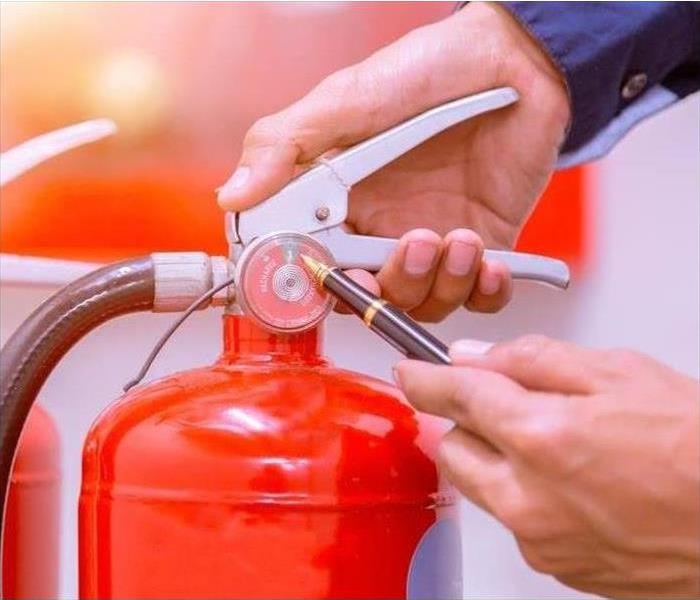 Take time now to prepare for the unexpected.
Take time now to prepare for the unexpected.
As a homeowner in Austin, TX, you should prioritize safety, for both your family and your property. That includes preparing ahead of time for a home fire. While you consider evaluation routes and emergency contacts, it's also beneficial to supply your home with a fire extinguisher as the first line of defense. The red canisters may seem a bit intimidating, but they are designed to help residents. Here are a few tips for wielding one with better care.
1. Pick Appropriate Locations
You want to have extinguishers near areas likely to have a fire; therefore, consider purchasing one for the kitchen and garage. These locations often have several appliances or electrical equipment capable of exposing the house to fire damage. Is your place two stories? If so, put one upstairs in a spot that is easy to access; furthermore, make other family members aware of where they are, and teach them how to use them.
2. Review Procedures
Don't expect to know how to handle these containers. Practice with them. Pick them up and examine the parts. You want to know if they will be able to physically use the device. If it's too heavy consider investing in smaller units. Next, go over the steps for using a fire extinguisher. A popular phrase is P.A.S.S.: pull the pin, aim low, squeeze the handle, and sweep from side to side. As you release the agent, you want to stay as close to the base of the flame as possible. This could help eliminate the flames.
3. Call for Help
Once you've suppressed the blaze, call in a fire restoration company to inspect the premises. The workers can test the area to determine the extent of the problem and recommend recovery services. Whether it's a kitchen fire or lightning strike, they can offer assistance in repairs as well as how to salvage ruined materials. In fact, they have special equipment to remove smoky aromas and remove soot from walls and ceilings.
Take time now to prepare for the unexpected. Purchase safety equipment, and learn how to use a fire extinguisher. It could save your property.




 24/7 Emergency Service
24/7 Emergency Service









